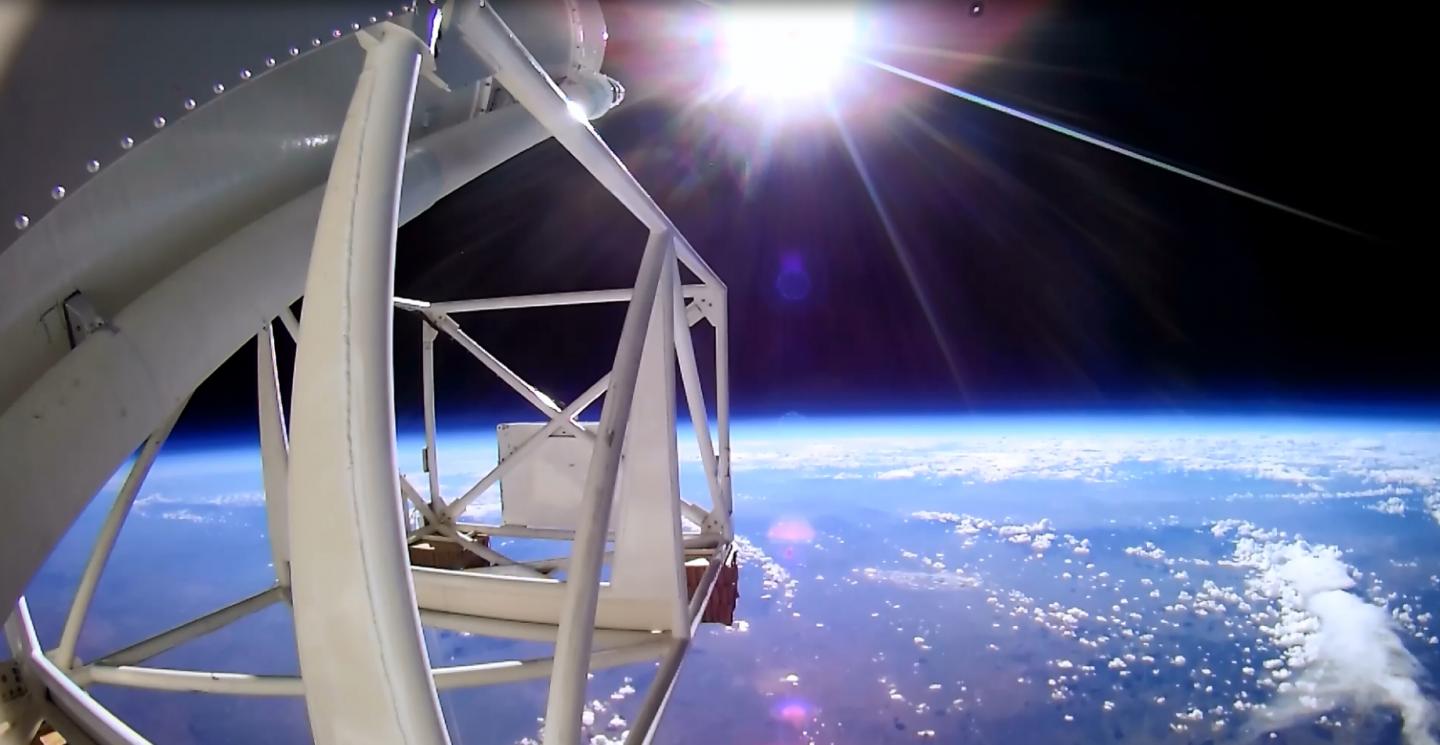They're affordable and they're reusable and since the 1950s, with the invention of the 'natural' shaped polyethylene balloon, there has been a surge in the quality and amount of science being performed with them. Researchers in everything from high-energy astrophysics (particle, x-ray and gamma-ray) to geospace uses them.
Existing balloons are capable of carrying large payloads to high altitudes for flight durations lasting tens of days. The longest flight to date was that of SuperTIGER in 2012-2013 on a vented zero-pressure balloon. This payload weighed 2,025 kg (not including flight straps) and flew to a maximum altitude of ~39.6 km. The entire flight lasted for just over 55 days.

The High Energy Replicated Optics to Explore the Sun (HEROES) telescope is a hard X-ray telescope, sensitive in the 20-75 keV range. Credit: R. Salter, Columbia Scientific Balloon Facility
The development of the Super-Pressure Balloon holds promise for achieving even longer flights launching from Antarctica (> 100 days), and Long Duration Balloon flights from mid-latitude launch sites.
This capability, combined with improved payload pointing, light-weight gondolas and more sophisticated instrumentation will enable scientists to make new discoveries and develop novel instrumentation suitable for orbital missions.
This platform will also continue to provide a training ground for the next generation of scientists and engineers.
Citation: Wilson-Hodge, Colleen A. and Gaskin, Jessica and Christe, Steven and Shih, Albert and Tennant, Allyn and Swartz, Doug and Kilaru, Kiranmayee and Elsner, Ron and Kolodziejczak, Jeff and Ramsey, Brian,Calibration of the High Energy Replicated Optics to Explore the Sun (HEROES) Hard X-ray Telescope, Journal of Astronomical Instrumentation, DOI:10.1142/S2251171714400078





Comments